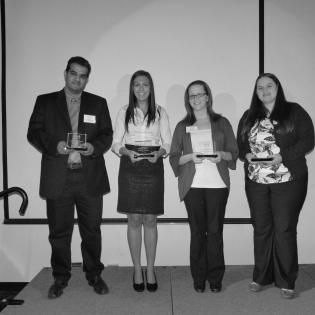Classroom Constitution
Students will learn the fundamental principles of parliamentary procedure and use the procedure to create a plan for a service project in the community.
The learner will:
- explain the purpose and procedures of parliamentary procedure.
- use parliamentary procedure to conduct a classroom town meeting and create a set of classroom rules.
- student copies of Basic Parliamentary Procedure
- student copies of Sample Classroom Constitution
- display copy of Principles of Parliamentary Procedure
Instructions
Introduce the concept of a town meeting (form of direct democracy used at the local level of government, introduced in New England) to students. Explain that the class will use a town meeting format to create a set of classroom rules. Teacher Note: I usually use this unit/lesson at the beginning of the year and allow the students to create their quorum, eligibility requirements and procedures for their town meetings. They then use this guide to develop classroom rules. Feel free to use Sample Classroom Constitution (Attachment Two) containing already established quorum, eligibility and procedures for the students to follow. The learners can then just create their own classroom rules. This lesson can be modified to fit your classroom. It can be as involved as you want it to be.
Introduce parliamentary procedure (rules used to run a meeting; often used during town meetings, in student councils, state legislatures and Congress) to the students using Principles of Parliamentary Procedure (Attachment Three).
Distribute Basic Parliamentary Procedure (handout) to students and review the information. (Students should keep this as a guide for town meetings, if you plan on allowing the class to hold an occasional meeting. It is not necessary for students to keep the guide if the town meeting format will not be used in class.)
At this time decide whether or not the students will establish their own Classroom Constitution or just a set of Classroom Rules.
- Classroom Rules: Use Sample Classroom Constitution (Attachment Two) as a guide for the class to follow. The students will need a copy. The teacher should encourage students to act as moderator. Improvise as necessary. Teacher Note: I do not let students pass class rules that violate other levels of government such as school rules, city/township ordinances, state/or federal laws. They cannot pass rules that dictate how I teach. Those are my only guidelines. The majority must be in favor for the passage of class rules. I sometimes have classes that pass rules such as: "can eat in class" or "can wear Walkmans during student work time." As it turns out, by allowing them to do this, they often monitor themselves and respect the rules more. I usually mandate that they pass an amendment to these rules allowing me, the teacher, to remove the rule if it is abused so that I can look after the common good of the class.
Classroom Constitution: Instruct students that you will model the role of moderator for the first town meeting only. After the first meeting is complete, only students may fulfill the role of moderator.
- Introduce the objective of the town meeting: To create guidelines to run effective classroom town meetings. Explain that each town meeting must start with an agenda (an official order of items on a chart to be followed in a meeting or convention). Create the agenda on the board. It should include the creation of a quorum, eligibility requirements and procedures for classroom town meetings. Be sure to include selection of a moderator and voting process in this section.
- Ask the learners to decide where they would like to start on the agenda and start the meeting. Students must make a motion to propose any action taken. Point of privilege/information/opposition must be used prior to any statement. Follow the guidelines of Basic Parliamentary Procedure (Attachment One) and Sample Classroom Constitution (Attachment Two) to complete this town meeting. Stir things up if necessary by proposing things like, "Only girls will have the right to vote," or "The teacher will have all the power." The learners will get the hang of it. Teacher Note: The process usually takes two or three class periods. It is normal for students to get frustrated with this process. That means they are learning how democracy works. When everyone is allowed to speak, the process can slow down and become repetitious. It can be frustrating. Be sure to point these things out!
Upon completion of this meeting, give the students a day or two break from the town meeting format. Then have the students use the format to create a set of classroom rules. Have a student be the moderator. This will be a much faster process.
As an assessment, assign a reflective writing assignment in which the learners complete the following:
- Was the class meeting effective in allowing the class to create class rules?
- Think and then write at least three sentences about a bad part of the meeting and three sentences about a good part of the meeting. Example: I did not like it when the moderator never called on me. I wanted to speak about a topic. If people are not allowed to speak, it hurts democracy.
Using the town meeting format, students will design a detailed plan for a philanthropic activity. It is up to the students, with some class time provided, to complete the project. See Extension for suggestions.
Philanthropy Framework
-
Strand PHIL.II Philanthropy and Civil Society
-
Standard PCS 07. Skills of Civic Engagement
-
Benchmark HS.3 Participate in acts of democratic citizenship in the community, state or nation, such as petitioning authority, advocating, voting, group problem solving, mock trials or classroom governance and elections.
-
-
-
Strand PHIL.IV Volunteering and Service
-
Standard VS 04. Raising Private Resources
-
Benchmark HS.3 Describe a detailed action for service.
-
-
